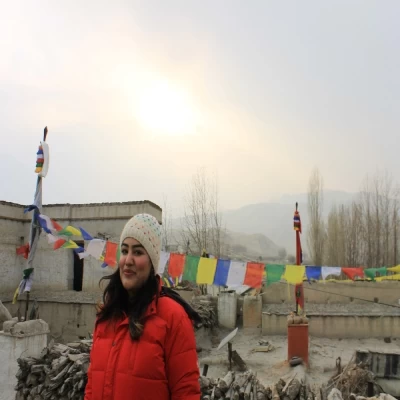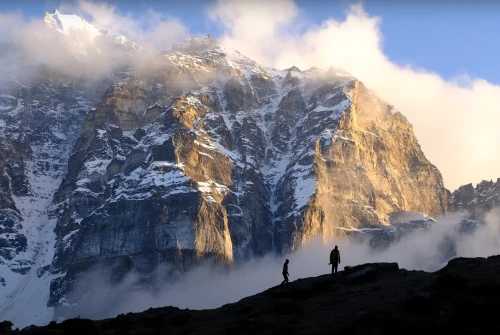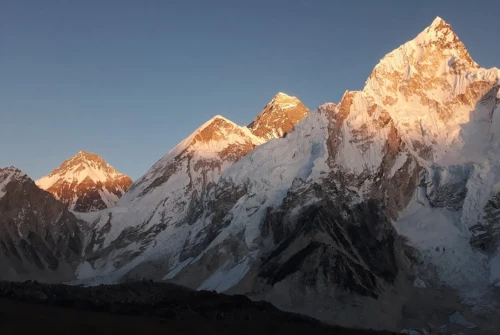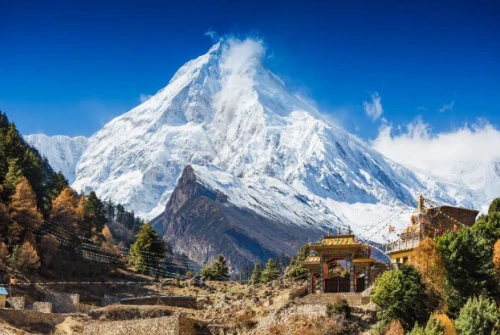Introduction
Trekking to Everest Base Camp (EBC)is one of the world’s most iconic and rewarding adventures. Each year, thousands of trekkers from around the globe set their sights on reaching the base of the tallest mountain on Earth Mount Everest (8,848.86 meters). The journey offers more than just stunning views; it’s a cultural immersion into the heart of the Khumbu region, a physically demanding trek through high-altitude terrain, and a life-changing experience for many.
However, while the dream is universal, the cost of making it a reality can vary widely. Whether you're a solo budget backpacker or a luxury trekker seeking comfort every step of the way, understanding the financial aspects of the Everest Base Camp trek is essential. A well-informed budget not only helps you avoid unexpected expenses but also ensures a smoother, safer, and more enjoyable trekking experience.
The total cost of an EBC trek depends on several key factors, such as trekking permits, transportation to the trailhead (typically Lukla), accommodation and meals along the trail, guides and porters, travel insurance, and trekking gear. Personal preferences like whether you choose to stay in basic tea houses or upscale lodges, or whether you trek independently or with a guided group also significantly impact your total budget.
In this comprehensive cost breakdown, we’ll walk you through each major expense category, offering insights, price ranges, and cost-saving tips to help you plan your journey effectively. Whether you're planning a budget-friendly trek or looking to explore EBC in luxury and comfort, this guide will help you set realistic expectations and prepare financially for the adventure of a lifetime.
Major Cost Factors of EBC Trek
The cost of trekking to Everest Base Camp (EBC) can vary significantly based on a range of factors, from the level of comfort you seek to the season you choose to trek. Whether you're planning a budget adventure or a premium experience, it's essential to understand where your money will go.
Some of the most significant cost components include:
Trekking permits and entry fees, which are mandatory for all trekkers entering the Everest region.
Transportation expenses, particularly the cost of flights to and from Lukla or alternative routes like Jiri or Salleri.
Accommodation and food costs, which can range from basic tea houses to more comfortable lodges with added amenities.
Hiring a guide and porter, a common and often recommended choice for safety, cultural insights, and ease of travel.
Travel insurance, especially one that covers high-altitude trekking and emergency evacuations.
Trekking equipment and gear, whether purchased or rented, which is vital for safety and comfort in the Himalayan environment.
Each of these factors can influence your total trip cost dramatically, depending on how you plan and what level of service or support you choose. In the following sections, we’ll break down each of these categories to give you a clear picture of what to expect and how to budget accordingly.
Trekking Permits and Fees
Before beginning your Everest Base Camp trek, it’s essential to obtain the required official permits to enter and trek within the Everest region. These permits are not only mandatory by law but also contribute to environmental conservation, local infrastructure, and trekker safety throughout the Khumbu region.
The first and most important permit is the Sagarmatha National Park Entry Permit, which costs $30 USD per person. This fee supports the maintenance and protection of the national park, a UNESCO World Heritage Site known for its diverse alpine ecosystems and breathtaking mountain landscapes.
In addition to that, all trekkers must acquire the Khumbu Pasang Lhamu Rural Municipality Permit, which costs $20 USD per person. This permit is issued by the local government to regulate tourism in the area and support community development in the Khumbu region.
Depending on your trekking route and whether you’re trekking independently or with an agency, you might also be required to obtain a TIMS Card (Trekkers’ Information Management System). The cost is typically around $20 USD per person. While the TIMS card is not always mandatory for the EBC trek especially when permits are handled by local agencies,it may still be required for certain trekking packages or routes that extend beyond the Everest region.
Having these permits not only ensures you are trekking legally and responsibly, but also allows authorities to monitor and support trekkers in case of emergencies, especially in remote areas with limited access.
Transportation Costs
Getting to the starting point of the Everest Base Camp (EBC) trek is a major part of your journey and your budget. The most popular and convenient option is a domestic flight from Kathmandu (or Ramechhap) to Lukla, the gateway to the Everest region. A round-trip flight typically costs between $410 to $450 per person, depending on the season and availability. These flights offer breathtaking views of the Himalayas and cut down days of additional travel, but they are also highly weather-dependent. Delays and cancellations are common, especially during the monsoon and winter seasons, so it’s wise to have buffer days and contingency plans in your itinerary.
For those looking for a more budget-friendly or adventurous alternative, traveling by road to Jiri or Salleri is an option. From Kathmandu to Jiri or Salleri, expect to pay around $20 to $50, depending on whether you take a local bus or a shared/private jeep. These overland routes, however, add several days of trekking before reaching Lukla or Namche Bazaar, making them better suited for those with extra time and a desire to explore less-traveled trails.
If you’re looking for a more luxurious and time-saving alternative, a helicopter ride from Kathmandu to Lukla is available, costing approximately $500 per person (depending on group size and availability). This option not only offers a thrilling aerial view of the Himalayas but also bypasses the unpredictability of regular flights.
No matter which transportation option you choose, it's crucial to plan ahead, monitor weather conditions, and allow flexibility in your schedule to accommodate potential delays.
Accommodation and Food Expenses
Tea houses: $5–$10 per night for basic lodging with minimal facilities. Expect shared rooms and common bathrooms.
Luxury lodges: $30–$100 per night with better facilities, private bathrooms, and more comfort.
Meals: $10–$15 per meal, with higher prices at higher altitudes due to the cost of transportation.
Extras (WiFi, hot showers, battery charging): $2–$5 per use. Some tea houses charge extra for these services, which adds to the overall cost.
Hiring a Guide and Porter
Guide cost: $25–$40 per day. A guide ensures safety, navigation, and better cultural experiences.
Porter cost: $15–$25 per day. A porter helps carry your luggage, making the trek easier and more enjoyable.
Hiring local guides and porters can enhance your experience and make trekking more manageable while supporting the local economy.
Travel Insurance
High-altitude trekking carries risks, so travel insurance is essential.
Typical insurance cost: $100–$200 for policies covering high-altitude trekking.
Coverage: Includes medical emergencies, evacuations, trip cancellations, and lost baggage. Emergency helicopter evacuations can cost thousands of dollars without insurance.
Equipment and Gear Expenses
Trekking gear can be rented or purchased in Kathmandu.
Buying gear: $200–$500 depending on quality and brand. Essentials include down jackets, trekking boots, sleeping bags, and thermal wear.
Renting gear: $50–$100 for essential items like jackets, boots, and trekking poles. Renting is a budget-friendly option for occasional trekkers.
Miscellaneous Expenses
Other costs to consider include:
Tips for guides and porters: $5–$10 per day per person. It’s a common practice to tip your trekking staff for their hard work.
Souvenirs and shopping: $20–$100+. You may want to buy prayer flags, trekking maps, or local handicrafts.
Emergency funds: At least $200 for unexpected situations such as health issues or flight cancellations.
Budget vs. Luxury Trekking Options
Budget trekking: $800–$1,200. This includes basic tea house stays, simple meals, and minimal luxuries.
Mid-range trekking: $1,500–$2,000. Offers better accommodations, guided trekking, and extra services like WiFi and hot showers.
Luxury trekking: $2,500–$3,500+. Includes high-end lodges, full support staff, private transport, and even helicopter returns.
Cost-Saving Tips for Everest Base Camp Trek
Travel during the off-season: Avoid peak trekking seasons (March-May, September-November) to reduce flight and accommodation costs.
Book flights early: Lukla flights get expensive closer to departure dates.
Share rooms and meals: Group travel reduces expenses significantly.
Rent instead of buying gear: Ideal for first-time trekkers who may not use the gear again.
Group vs. Solo Trekking: Which is More Affordable?
Solo trekking: More flexible but higher per-person costs for guides, porters, and permits.
Group trekking: Shared costs reduce overall expenses and provide safety benefits.
Additional Costs to Consider
Medical emergencies and evacuations: Helicopter rescues cost $5,000–$10,000 if uninsured.
Extra food and beverages: Snacks, bottled water, and soft drinks can be pricey.
Post-trek activities: Sightseeing in Kathmandu, additional tours, and shopping.
Summary Table of EBC Trek Costs
Expense Category | Estimated Cost Range |
Permits | $50–$60 |
Flights (Kathmandu–Lukla round trip) | $400–$450 |
Accommodation | $5–$100 per night |
Food | $5–$10 per meal |
Guide | $25–$40 per day |
Porter | $15–$25 per day |
Travel Insurance | $100–$200 |
Equipment Rental | $50–$100 |
Miscellaneous (Tips, WiFi, etc.) | $100–$300 |
Total Estimated Cost | $800–$3,000+ |
Conclusion
The total cost of an Everest Base Camp trek varies from $800 to over $3,000, depending on your choices. Proper planning and budgeting ensure a smooth and enjoyable trekking experience. Whether you choose a budget-friendly adventure or a luxury trek, being prepared financially will make your journey stress-free.




